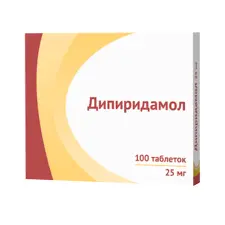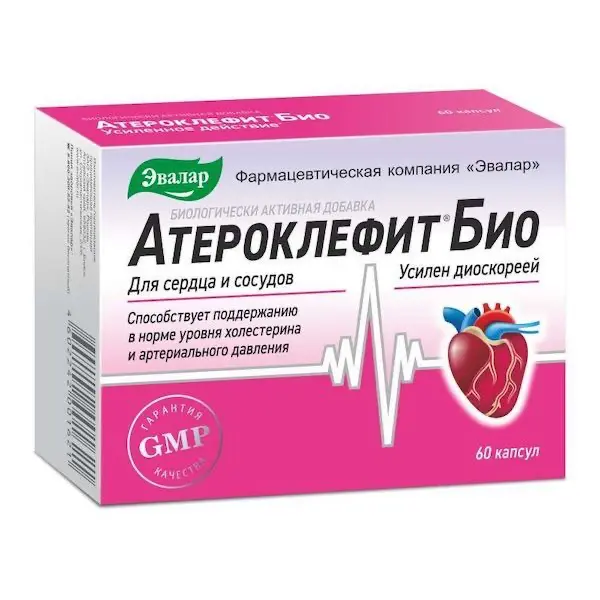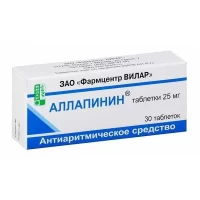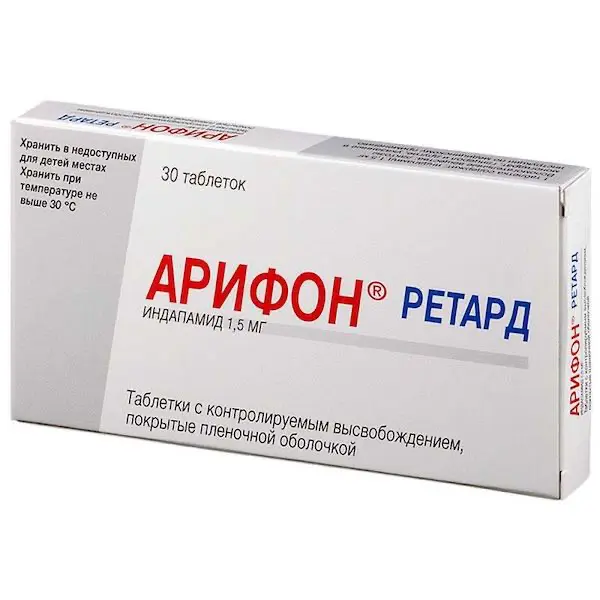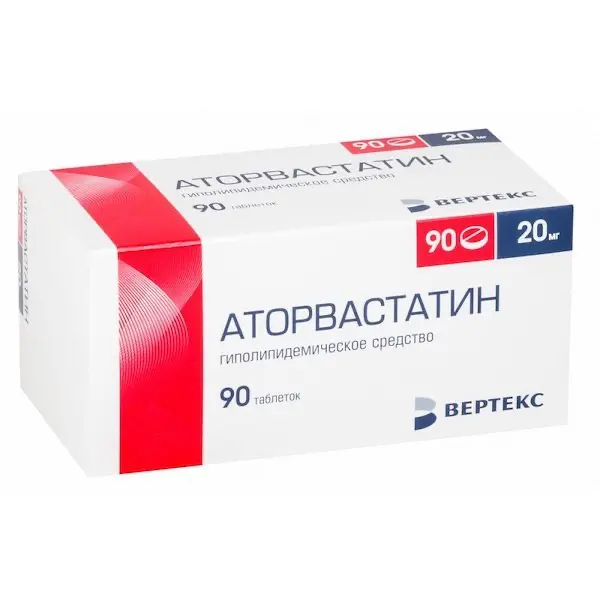Description
Dipyridamole Pharmacodynamics
Dipyridamole inhibits platelet aggregation and adhesion, improves microcirculation, and has a mild vasodilator effect.
The mechanism by which dipyridamole has an inhibitory effect on platelet aggregation is associated with the inhibition of adenosine reuptake (platelet reactivity inhibitor) by endothelial cells, red blood cells and platelets; activation of adenylate cyclase and inhibition of platelet phosphodiesterase. Thus, dipyridamole prevents the release of aggregation activators from platelets – thromboxane (TxA2), ADP, serotonin, etc. Dipyridamole increases synthesis of prostacyclin PgI2 by vascular endothelium, normalizes the ratio of PgI2 to TxA2, preventing platelet aggregation, and increases synthesis of endothelial nitric oxide (N0). Dipyridamole reduces platelet adhesiveness, prevents clot formation in vessels and stabilizes blood flow in the focus of ischemia.
Dipyridamole dose-dependently prolongs pathologically shortened life time of platelets.
Dipyridamole, due to its vasodilator properties, helps to reduce total peripheral vascular resistance, improves microcirculation, has angioprotective effect. These effects are due to increased activity of endogenous adenosine (adenosine affects vascular smooth muscle and prevents release of norepinephrine). Dipyridamole has both angiogenic and arteriogenic activity, stimulating the formation of new capillaries and collateral arteries.
Dipyridamole normalizes venous outflow, reduces the incidence of deep vein thrombosis in the postoperative period. It improves microcirculation in the retina and renal tubules.
In neurological practice such pharmacodynamic effects of dipyridamole as reduction of cerebral vascular tone and improvement of cerebral circulation are used. According to angiographic studies, the use of dipyridamole in combination with acetylsalicylic acid (ASA) can slow the progression of atherosclerosis.
In obstetric practice dipyridamole is used to improve placental blood flow and prevent dystrophic changes in the placenta, eliminate fetal tissue hypoxia and glycogen accumulation in them.
Indications
– Treatment and prophylaxis of cerebral circulation disorders of ischemic type;
– Primary and secondary prevention of coronary heart disease (CHD), especially with intolerance to acetylsalicylic acid (ASA);
– dyscirculatory encephalopathy;
– Prevention of arterial and venous thrombosis and its complications;
– prevention of thromboembolism after heart valve replacement surgery;
– Prevention of placental insufficiency in complicated pregnancy;
– as a part of complex therapy for microcirculatory disorders of any genesis;
– As an interferon inducer and immunomodulator for the prevention and treatment of influenza, SARS.
Contraindications .
– Hypersensitivity to the components of the drug;
– Lactose intolerance, lactase deficiency, glucose-galactose malabsorption syndrome;
– acute myocardial infarction;
– unstable angina pectoris;
– widespread stenotic atherosclerosis of the coronary arteries;
– subaortic stenosis;
– decompensated heart failure;
– severe arterial hypotension; collapse;
– severe arterial hypertension;
– severe cardiac rhythm disturbances;
– chronic obstructive pulmonary disease (COPD);
– decompensated renal failure;
– hepatic insufficiency;
– hemorrhagic diathesis;
– Diseases prone to bleeding (gastric ulcer and duodenal ulcer, etc.);
– Children under 12 years of age (efficacy and safety have not been studied).
Caution:
Caution is administered to elderly patients; may cause orthostatic hypotension.
Dosage and administration
- Tablets are taken orally, on an empty stomach, with a little water, without breaking and biting. Dose of the drug is adjusted according to the indications, the severity of the disease and the patient’s reaction to treatment. The duration of the course of treatment is determined by the doctor.
- To reduce platelet aggregation, it is recommended to take the drug in a daily dose of 75-225 mg.
- In severe cases, the daily dose may be increased to 600 mg.
- For prophylaxis of placental insufficiency, it is recommended to take Dipyridamole in a dose of 25 mg or 75 mg (1 tablet 3 times a day). The maximum recommended daily dose is 225 mg.
- For prevention and treatment of cerebrovascular disorders, the daily dose of Dipyridamole is 225-450 mg (1 tablet of Dipyridamole 75 mg 3-6 times daily).
- Patients with coronary heart disease are recommended to take the drug Dipyridamole 75 mg 3 times a day. If necessary, the dose may be increased under medical supervision.
- For prevention of influenza and other acute respiratory infections, especially during epidemics, it is recommended to take the drug Dipyridamole according to the following scheme: 50 mg (2 tablets of 25 mg) once every 7 days for 4-5 weeks.
- To prevent relapses in patients who are frequently ill with respiratory viral infections, it is recommended to take the drug Dipyridamole according to the following regimen: 100 mg (2 tablets of 25 mg 2 times a day with an interval of 2 hours) once a week for 8-10 weeks.
- Dipyridamole is suitable for long-term treatment.

